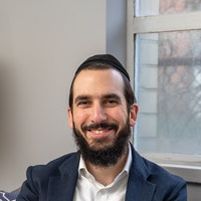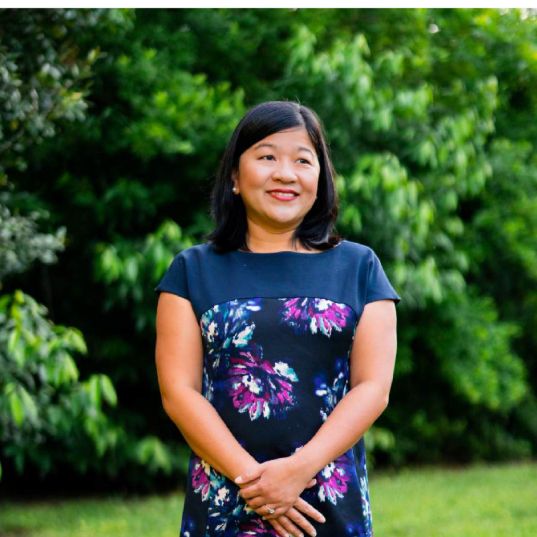Understanding the Basics of Anxiety
Anxiety
is a natural stress response that helps us stay alert, but it can feel overwhelming when it sticks around or shows up too strongly. It often looks like persistent worry, muscle tension, restlessness, or a racing heart, and can make it hard to
sleep
or focus. You might notice it before a big meeting, on a crowded subway, or when juggling fast-paced schedules. When anxiety becomes constant or starts getting in the way of daily life, it’s a sign to pay attention. Knowing what it is and how it shows up is the first step toward feeling better.
Awareness matters because it helps you recognize patterns, choose helpful coping tools, and reach out for support sooner. In New York City, common triggers include noise, crowds, work pressure, financial stress, and nonstop notifications. Understanding these connections can reduce shame and make it easier to talk to friends, family, or a professional. Early support can improve sleep, mood, and focus, making daily routines more manageable. Many New Yorkers experience anxiety—you’re not alone, and help is available.
Who Can Experience Anxiety
Anxiety can affect anyone—people of all ages, genders, cultures, and backgrounds. Some groups may experience it more often, including women and girls, people facing chronic stress or
trauma
, LGBTQ+ individuals, caregivers, students, and those with chronic health conditions. Experiencing anxiety is common and not a personal failing; it’s a natural human response. You’re not alone, and support is available for everyone.
Signs You Might Notice
It’s normal to feel stressed in a city that never slows down, and noticing these shifts is a strong first step. You’re not alone—many New Yorkers experience these feelings, and support is available.
- Worry that’s hard to turn off, even about everyday things
- Feeling restless, keyed up, or on edge
- Trouble concentrating or feeling your mind go blank
- Trouble falling or staying asleep, or waking up unrefreshed
- Muscle tension, headaches, or stomach discomfort
- Irritability or feeling easily overwhelmed
Factors That Contribute to Anxiety
Anxiety is common and complex. It can be shaped by many factors outside your control, and experiencing it is not a personal failing. Understanding where it comes from can help you find the support you deserve.
- Biological
- Family history or genetics
- Brain chemistry and nervous system sensitivity
- Hormonal shifts or medical conditions (e.g., thyroid issues)
- Psychological
- Past trauma or adverse experiences
- Perfectionism and self-critical thinking
- Difficulty coping with stress or uncertainty
- Environmental
- Work, school, or caregiving pressures
- Financial strain or housing instability
- Major life changes or social isolation
The Impact of Anxiety on Daily Living
Feeling anxious can make everyday life in New York City feel overwhelming, especially with the fast pace, noise, and constant demands. You’re not alone—many people experience this, and support is available. Here are common ways anxiety can affect daily life, along with examples you might recognize around the city.
- Work and career: Trouble focusing during back-to-back meetings, worrying about performance, or avoiding networking events and busy offices.
- School and studying: Procrastinating on assignments, test anxiety, or skipping classes because the commute or crowded lecture halls feel too stressful.
- Relationships and social life: Canceling plans, feeling on edge in crowded restaurants or bars, or misunderstanding texts and feeling disconnected.
- Daily tasks and commuting: Dreading the subway at rush hour, avoiding errands due to long lines, or feeling overwhelmed by noise, sirens, and crowds.
- Physical health and sleep: Tension headaches, stomach issues, fatigue, or difficulty falling asleep after late nights and city noise.
- Emotional well-being and self-care: Persistent worry, irritability, or burnout that makes it hard to relax, set boundaries, or enjoy downtime.
- Money and housing stress: Anxiety about rent, roommates, or navigating appointments and paperwork for services and housing.
Proven Paths to Recovery
Recovery is possible. Many people find relief with approaches that are practical, proven, and tailored to their needs. You don’t have to do this alone—there are clear, effective steps forward.
- Cognitive Behavioral Therapy (
CBT
): Teaches skills to identify and change anxious thoughts and behaviors, reducing symptoms and building confidence.
-
Exposure
Therapy (including ERP): Gradually and safely faces feared situations, helping the brain learn that anxiety fades and you can cope.
- Acceptance and Commitment Therapy (ACT): Builds mindfulness and values-based actions so anxiety has less control over your life.
- Medications (SSRIs/SNRIs): Daily medicines that balance brain chemistry; often reduce worry and physical symptoms over several weeks.
- Peer or Skills Groups: Supportive groups that offer connection, coping tools, and encouragement from people who understand anxiety.
- Lifestyle Approaches: Regular exercise, good sleep, limiting caffeine, and breathing or relaxation practices calm the body and improve resilience.
Beginning Your Journey with Anxiety Therapy
Starting anxiety therapy often begins with noticing persistent worry,
panic
, or sleep and focus challenges that affect daily life. From there, use MiResource’s directory to research providers and filter by therapy approach (like CBT, ACT, or exposure therapy), insurance accepted, real-time availability, language, and your New York City neighborhood. Consider practical fit: if you live in Astoria or Jackson Heights, look for therapists near the N/W or 7 lines; if you work in Midtown or FiDi, you might prefer sessions near the 4/5/6, A/C/E, or 1/2/3 to make it easy to go before or after work. You can also filter for evening or weekend appointments and bilingual clinicians.
Compare a few options by reading bios, noting experience with anxiety and related concerns (panic, OCD, social anxiety), and checking commute time from places like the Upper West Side, Williamsburg, or Brooklyn Heights via the MTA, LIRR, or Metro-North. Book a first session directly through MiResource or by contacting the provider, confirm costs and sliding-scale options, and ask what to expect in the initial visit. After your first session, set a follow-up plan: decide on frequency (weekly or biweekly), discuss goals and measures of progress, and schedule your next appointments to align with your commute patterns and routine.
New York City offers a strong network of community-based support for anxiety that complements MiResource’s therapist directory, from peer-led groups and advocacy to evidence-based clinics and citywide programs accessible across boroughs. These trusted resources meet people where they are—near landmarks like Columbus Circle, Hell’s Kitchen, Midtown, and the Upper East Side—and provide education, support groups, crisis help, and specialized care for adults, youth, and families.
-
NAMI-NYC
(Midtown, near Penn Station): Free peer- and family-led support groups, classes, and helpline for people living with anxiety and their loved ones; advocacy and community programs citywide.
-
NYC 988
(Citywide): 24/7 call, text, and chat for emotional support, crisis counseling, and referrals to local services; mobile response available in all boroughs.
-
Fountain House
(Hell’s Kitchen, near Times Square): Community clubhouse offering peer support, social connection, and wellness programming for people living with mental health conditions, including anxiety.
- Columbia University Clinic for Anxiety and Related Disorders (
CUCARD
) – Manhattan (near Columbus Circle): Evidence-based CBT and exposure therapy for children, teens, and young adults with anxiety and Obsessive-Compulsive Disorder (OCD).
-
Weill Cornell Psychiatry Specialty Center
(Upper East Side, near NewYork-Presbyterian/Weill Cornell): Outpatient evaluation and CBT-based treatment for anxiety and related disorders for adults.
If your anxiety feels overwhelming or unsafe, immediate help is available in New York City. You are not alone, and there are 24/7 options to talk to someone now, get a mobile crisis response, or go to an emergency department. Use the steps below to get support right away, and choose the option that feels safest and most helpful for you.
- If you are in immediate danger, having thoughts of harming yourself or others, or can’t stay safe: call 911 or go to the nearest emergency room. NYC emergency departments open 24/7 include Bellevue (Manhattan), Kings County (Brooklyn), Elmhurst (Queens), Lincoln (Bronx), and Richmond University Medical Center (Staten Island).
- For urgent emotional support right now: call or text 988 (Suicide & Crisis Lifeline), or chat at 988lifeline.org. Tell them you’re in NYC and need help for anxiety; they can help you plan next steps.
- For NYC-specific help and mobile crisis response: call NYC Well at 1-888-NYC-WELL (1-888-692-9355), text “WELL” to 65173, or chat at nycwell.cityofnewyork.us to request a Mobile Crisis Team to come to you when appropriate.
- If you want a health-focused response through 911: in eligible NYC areas you can ask the dispatcher for B-HEARD (Behavioral Health Emergency Assistance Response Division) for mental-health-related emergencies.
Nature and Well-Being in New York City
Spending time in nature can help calm the nervous system, ease racing thoughts, and create a gentle reset when Anxiety feels overwhelming. Natural light, fresh air, and rhythmic movement like walking can lift mood and reduce tension. Short, mindful visits—focusing on breath, sounds, and textures—can make a meaningful difference. Start small, go at your own pace, and choose environments that feel safe and welcoming.
1) Central Park (The Ramble or North Woods): Take a slow, 20–30 minute walk, pausing to notice birdsong and practice deep breathing at a quiet bench.
2) Prospect Park (Lullwater and Long Meadow): Stroll the lakeside path and do a 5-minute grounding exercise—name five things you see, four you feel, three you hear.
3) Van Cortlandt Park, Bronx (John Kieran/Putnam Trail): Try a gentle out-and-back walk; keep your phone on “Do Not Disturb” to minimize stress.
4) Forest Park, Queens (Orange or Blue Trail): Walk under the oak canopies and end with a few stretches and a sip of water to reset before heading home.
Questions People Often Ask About Anxiety
1. How do I know if I need professional help for Anxiety?
If worry feels constant, interrupts sleep or appetite, and you can’t turn off “what if” thoughts, it’s a sign to get support. Therapy could help if anxiety makes it hard to focus at work or school, you avoid tasks or social plans, or you feel on edge most days. You might also notice headaches, stomach issues, irritability, or pulling away from
relationships
because you feel overwhelmed. If these patterns are sticking around and affecting your daily life, consider scheduling an appointment with a therapist or reaching out for help today.
2. What’s the first session of Anxiety therapy like?
In your first anxiety therapy session, you’ll meet your therapist, share a bit about your background, and talk about what brought you in. Together, you’ll review specific anxiety symptoms—like worry, panic, tension, or avoidance—and how they affect sleep, work or school, relationships, and daily routines. You’ll discuss patterns and triggers you’ve noticed, any coping strategies you already use, and what has or hasn’t helped. You and your therapist will then set clear, realistic goals for treatment so you know what to expect moving forward.
3. Are there lifestyle changes that can help with Anxiety?
Yes—lifestyle changes can make a real difference. Regular exercise can lower stress hormones and release endorphins, helping reduce physical tension and racing thoughts. Good sleep habits stabilize mood and reactivity, while balanced nutrition and steady blood sugar (including limiting caffeine and alcohol and staying hydrated) can lessen jitters and irritability. Mindfulness practices like deep breathing, meditation, or gentle yoga calm the nervous system and build coping skills for anxious moments. These self-care strategies work best alongside professional therapy and any treatment plan you’ve discussed with your provider.
4. Can Anxiety affect physical health too?
Yes—Anxiety can show up in the body as headaches, stomach issues, muscle tension, chest tightness, rapid heartbeat, and sleep problems. The mind-body connection means chronic stress and worry can activate your nervous system and hormones in ways that create real physical symptoms. The good news is that treating Anxiety in therapy can calm these systems, often reducing pain, improving sleep and digestion, and easing tension. As Anxiety improves, many people notice their overall physical well-being improves too.













